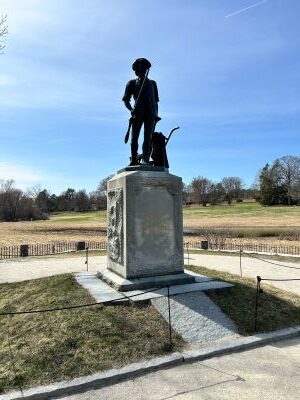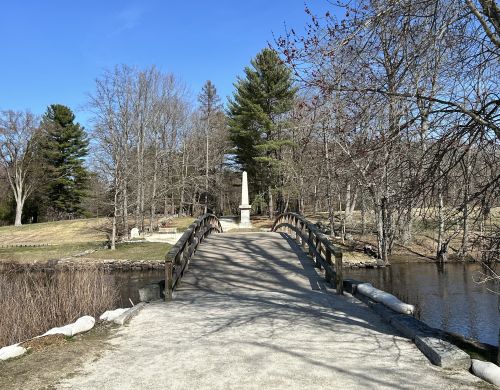
Hours after firing on militia in Lexington, MA, 700 British Regulars marched to nearby Concord to search for weapons they believed had been hidden there.
Visit the Minute Man National Historic Park to learn more about this historic event. Is it the start of American history or the end of British history in the colonies?
Getting There
Location: Concord, MA
Transport: Fly into Boston (Manchester, NH is another option about an hour’s drive to the north)
Highlights
Must-See:
- Old North Bridge
- Old Hill Burial Ground
5am - April 19, 1775
Approximately 700 British Regulars clash with the Lexington colonial Militia on their way to search and seize military weapons the colonists had been moving out of Boston and surrounding garrisons. The shots fired during the skirmish are generally regarded a the start of the American Revolution.
The militia had been alerted by the early warning system of William Dawes, Dr. Samuel Prescott, and Paul Revere, who escaped the patrols in Boston and rode out at midnight to warn the countryside.
7:30am - British troops arrive in Concord
The British Regulars were career soldiers, many of whom had been in service many years before the Revolution. I attended a talk by historian Don Hagist once, and he has researched the men who fought on the British side during the war. It’s really fascinating stuff!
You can learn more from his book, “Noble Volunteers” or his blog: https://redcoat76.blogspot.com/
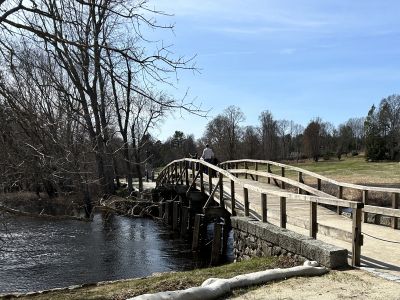
Once they arrived in Concord, the British split into smaller groups to search for weapons and secure the town and the two bridges so that the colonists couldn’t move the weapons further out into the countryside.
About 90 soldiers were stationed at the Old North Bridge.
9am - Smoke rising from Concord
The British troops in town didn’t find the weapons, but they found the gun carriages that would have been used to transport the guns in the field. As a precaution, these were set on fire, which unfortunately spread to a nearby home. The British troops in town eventually helped the townspeople put out the flames, but to the militia in the countryside, all they say was smoke rising from their town.
Believing the smoke to be the result of the British purposefully setting the town on fire, the militia stationed at the Old North Bridge decide to advance on the British troops at the site.
9:30am - 400 colonial militia take on 90 British
The British fire on the advancing militia, killing two colonists. The militia return fire, killing three British soldiers and wounding several others. The British had not been sent out to fight on April 19. They were only supposed to reclaim the missing weapons and return to Boston.
Following the exchange of shots at the Old North Bridge, the British retreated to Concord, but were harassed by various militia along their return route.
Today, the Old North Bridge has been restored to what it would have looked like in 1775, and a statue of a farmer leaving his plow and taking up arms stands ready at the site of the battle.
Aftermath
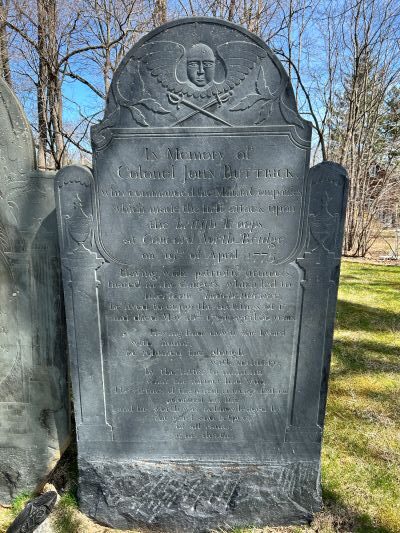
The fighting at Old North Bridge galvanized colonial resistance and led to a more uniform response of the Patriot cause, setting the stage for the Declaration of Independence the following year and eight long years of war.
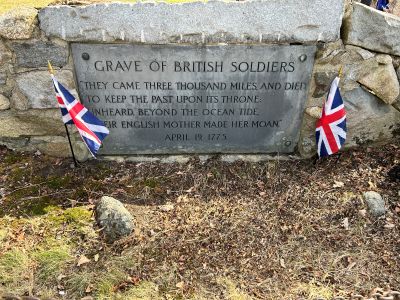

Inspired to visit? Check out the Minute Man National Historic Park for more information.
Interested in learning more about this time period in history? Here’s a brief primer of the Modern period to put this post in context!

